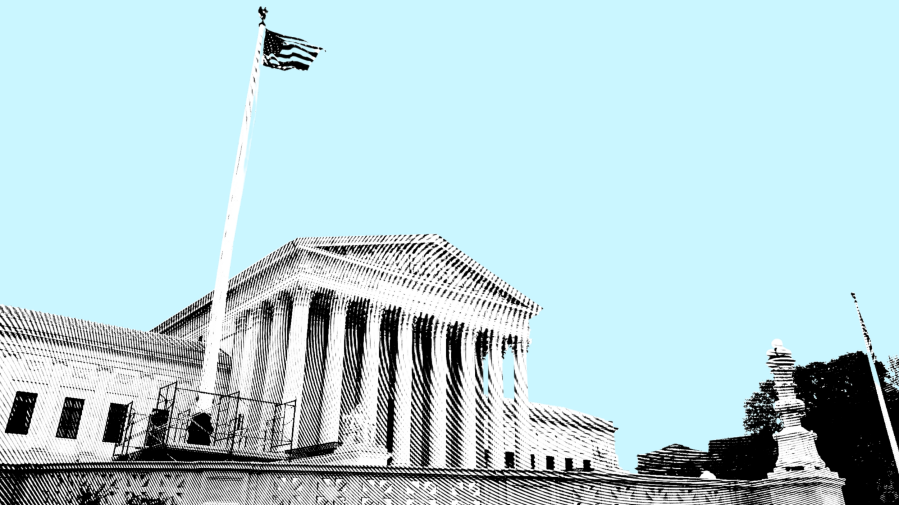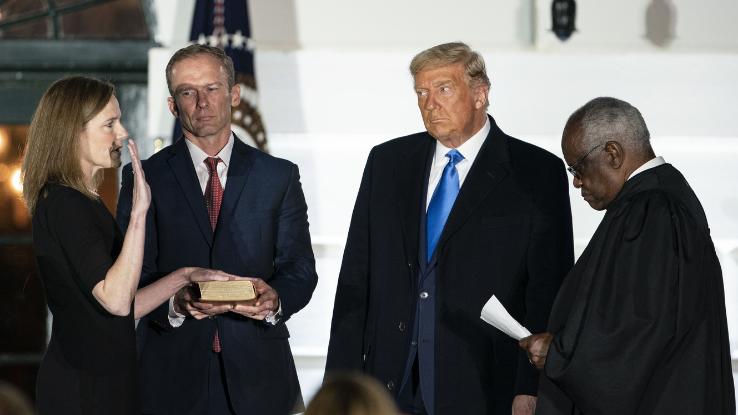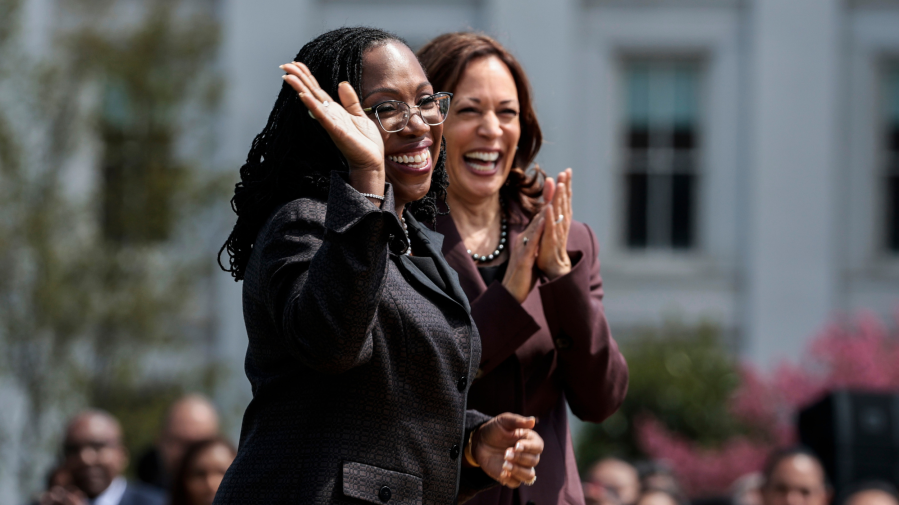
When Justice Ruth Bader Ginsburg passed away on September 18, 2020, many Americans didn’t take the time to grieve her fully. Instead, the question everyone was asking was, “What happens now?” While the Supreme Court of the United States (SCOTUS) is meant to be an impartial institution that interprets the Constitution, there’s no denying that the Justices’ readings follow a pattern — some are more conservative in their approach, while others are more liberal.
That said, many Americans viewed Ginsburg’s passing as the moment when the Supreme Court’s fragile balance shifted. In 2016, then-Senate Majority Leader Mitch McConnell vowed to block President Obama’s outgoing Supreme Court nomination of Merrick Garland on the grounds that the American people should have a “voice” and that rushing a nomination (and confirmation) would overly politicize the issue.
Donald Trump’s presidency resulted in not one, but three lifetime appointments to the Supreme Court. Before Ginsburg passed, Neil Gorsuch and Brett Kavanaugh were added to the bench, which, in turn, tasked Ginsburg with carrying an immense weight. If she retired, Trump would get to nominate another Justice; any president, regardless of party affiliation, nominating nearly half of the Supreme Court’s members creates a kind of slant or imbalance.

When Ginsburg passed away just two months before the 2020 presidential election, McConnell didn’t hold to the principles he’d outlined four years earlier. Instead, Amy Coney Barrett — a longtime Notre Dame Law School professor who served fewer than three years on the Seventh Circuit — was sworn in, replacing Ginsburg just a week before Election Day.
And that brings us to the idea of expanding the Supreme Court. The notion isn’t at all new, but it certainly had a surge of popularity two years ago. Now, with SCOTUS positioned to potentially overturn the decision made in Roe v. Wade, many Americans are wondering about the history of expanding the Supreme Court — and if the judicial branch needs to be reevaluated in 2022.
Has the Number of Supreme Court Seats Been Adjusted Before?
The speedy confirmation of Justice Barrett led many to criticize McConnell. Representative Alexandria Ocasio-Cortez (D-NY; @AOC) simply tweeted, “Expand the court.” Additionally, Senator Ed Markey (D-MA; @EdMarkey), who is Ocasio-Cortez’s Green New Deal co-author, tweeted, “Mitch McConnell set the precedent. No Supreme Court vacancies filled in an election year. If he violates it, when Democrats control the Senate in the next Congress, we must abolish the filibuster and expand the Supreme Court.”
This call for a SCOTUS expansion has many Americans wondering: Is such a move even possible? The short answer is “yes.” Congress could easily change the number of seats on the Supreme Court bench. According to the Supreme Court’s website, “The Constitution places the power to determine the number of Justices in the hands of Congress” — just another example of those supposed checks and balances that guide a constitutional government.
That said, the number of Justices has shifted several times throughout the Court’s history. In 1789, the first Judiciary Act set the number of Justices at six; during the Civil War, the number of seats went up to nine and then briefly 10; and, once President Andrew Johnson took office, Congress passed the Judicial Circuits Act in 1866, cutting the number of Justices to seven so Johnson couldn’t stack the Court in favor of Southern states.

Since 1869, however, the Supreme Court has been composed of nine Justices. In semi-recent history, there’s been one notable attempt to expand the Court — one that will live in infamy, so to speak. Back in 1937, President Franklin Delano Roosevelt (FDR) aimed to expand the Court, which kept shooting down some of his New Deal legislation. More specifically, FDR felt that many of the older Justices were out of touch with the times, so much so that they were colloquially dubbed the “nine old men.”
FDR’s proposal? Add one Justice to the Supreme Court for every 70-year-old Justice residing on the bench. That would’ve resulted in 15 Supreme Court Justices, but even the Democrat-controlled Congress and FDR’s own vice president were against the idea. Since FDR’s infamous defeat, no attempt to expand or reduce the Supreme Court has gathered much steam — until now.
How Likely Is It That We’ll Expand the Supreme Court in 2022?
Politico points out that President Biden has been outspoken about not expanding the court. In 2019, he even went as far as saying, “we’ll live to rue that day [we expand the Court],” arguing that an expansion would lead to constant changes — more expansions, more reductions. In short, it would shake the American people’s faith in the legitimacy of the Supreme Court (and, potentially, the Democratic party). Of course, that’s just one scenario — one that hasn’t happened in the past.
While on the campaign trail, Vice President Kamala Harris showed some support for the idea, saying she’d be “open” to it. However, both Vice President Harris and President Biden have also dodged questions surrounding court-packing and Supreme Court expansion.
More outspoken proponents have tried to gather momentum for the idea. Representative Ocasio-Cortez expanded upon her initial “Expand the Court” tweet, calling out Republicans’ hypocrisy toward appointing new Justices during presidential election years. “Republicans do this because they don’t believe Dems have the stones to play hardball like they do. And for a long time they’ve been correct,” she tweeted. “But do not let them bully the public into thinking their bulldozing is normal, but a response isn’t. There is a legal process for expansion.”

In the face of a 6–3 conservative majority, Americans like Representative Ocasio-Cortez argue that the Supreme Court is out of balance. More than that, the Court may not be reflective of the American people’s concerns and values, harkening back to FDR’s “nine old men” problem.
As we’ve seen in the wake of the Dobbs v. Jackson draft opinion leak, so much lies in the hands of the Court. If the draft opinion remains as-is, the Dobbs decision will, in turn, lead to overturning the landmark decision the Court made in Roe v. Wade. Not only will this lead to abortion bans and restrict healthcare even further, but it could also create a domino effect.
The Roe decision, which hinges on the Constitutional right to privacy, is not dissimilar from other Court-protected rights, ranging from the right to contraception to marriage equality. While President Biden is concerned that expanding the Supreme Court could lead to questions of its legitimacy, undoing decades-old precedents, like Roe, may also undermine the Court’s validity and authority.
All of this to say, an imbalance in the Supreme Court, regardless of said leaning, weakens our democracy. For now, we’ll have to wait and see if any looming decisions lead President Biden and members of Congress to seriously consider a Supreme Court expansion.






